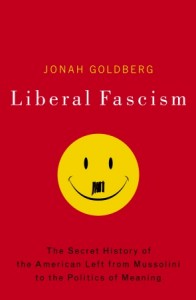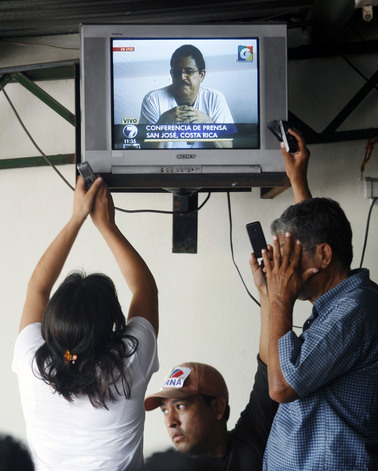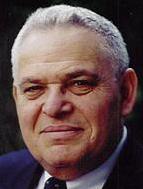Alex Constantine - January 26, 2010
 The Scholarly Flaws of Liberal Fascism
The Scholarly Flaws of Liberal Fascism
By Robert Paxton
History News Network | 1-25-10
Robert Paxton is emeritus professor of history at Columbia University. His latest book is Anatomy of Fascism (Vintage, 2005).
Jonah Goldberg tells us he wrote this book to get even. The liberals started it by “insist[ing] that conservatism has connections with fascism” (p. 22). Conservatives “sit dumbfounded by the nastiness of the slander” (p. 1). “The left wields the term fascism like a cudgel” (p. 3). So Jonah Goldberg has decided it is time to turn the tables and show that “the liberal closet has its own skeletons” (p. 22). After years of being “called a fascist and a Nazi by smug, liberal know-nothings” he decides that “responding to this slander is a point of personal privilege” (p. 392).
Feeling oneself a victim is wonderfully liberating. Anything goes. So Jonah Goldberg pulls out all the stops to show that fascism “is not a phenomenon of the right at all. It is, and always has been, a phenomenon of the left” (p. 7). The reader perceives at once that Goldberg likes to put things into rigid boxes: right and left, conservative and liberal, fascist and non-fascist. He doesn’t leave room for such complexities as convergences, middle grounds, or evolution over time. Thus Father Coughlin was always a man of the left, and so was Mussolini (Giacomo Matteotti or the Rosselli brothers, leaders of the Italian left whom Mussolini had assassinated, would have been scandalized by this view). The very mention of a “Third Way” puts one instantly into the fascist box.
That’s too bad, because there really is a subject here. Fascism – a political latecomer that adapted anti-socialism to a mass electorate, using means that often owed nothing to conservatism – drew on both right and left, and tried to transcend that bitter division in a purified, invigorated, expansionist national community. A sensitive analysis of what fascism drew from all quarters of the political spectrum would be a valuable project. It is not Jonah Goldberg’s project.
The bottom line is that Goldberg wants to attach a defaming epithet to liberals and the left, to “put the brown shirt on [your] opponents,” as he accuses the liberals of doing (p. 392). He goes about this task with a massive apparatus of scholarly citations and quotations. But Goldberg’s scholarship is not an even-handed search for understanding, following the best evidence fully and open-mindedly wherever it might lead. He chooses his scholarly data selectively and sometimes misleadingly in the service of his demonstration.
Jonah Goldberg knows that making the Progressives, Woodrow Wilson, Theodore Roosevelt and FDR the creators of an American fascism – indeed the only American fascism, for George Lincoln Rockwell and other overt American fascist or Nazi sympathizers are totally absent from this book – is a stretch, so he has created a new box: Liberal Fascism. The Progressives and their heirs who wanted to use government to rectify social and economic ills, and who, in Goldberg’s view, thereby created an American Fascism, acted with good intentions, rarely used violence, and had nothing to do with Auschwitz. Even so, they share an intellectual heredity and a set of common goals with the European fascists. So they go into the “Liberal Fascist” box.
Liberal Fascism is an oxymoron, of course. A fascism that means no harm is a contradiction in terms. Authentic fascists intend to harm those whom they define as the nation’s internal and external enemies. Someone who doesn’t intend to harm his or her enemies, and who doesn’t relish doing it violently, isn’t really fascist.
But the problems go much deeper. Pushing Liberalism and Fascism together requires distorting both terms. It doesn’t help that these are two of the most problematical words in the political lexicon. To his credit, Goldberg is aware that the term “liberal” has been corrupted in contemporary American usage. It ought to mean (and still means in the rest of the world) a principled opposition to state interference in the economy, from Adam Smith to Ronald Reagan. Goldberg sometimes refers to “classical liberalism” in this sense, and with approval. Unfortunately he has capitulated to the sloppy current American usage by which “liberal” means, usually pejoratively nowadays, any and all of the various components of the Left, from anarchists and Marxists to moderate Democrats.
Goldberg stereotypes liberals to make them abstract, uniform, robotic. The telltale phrase is “liberals say” or “liberals think” (mostly without anyone quoted or footnoted). For example, “Liberals . . . claim” that free-market economics is fascist (p. 22). Could we please have a few examples of “liberals” who say this? It is a straw man, as is the vast, ghostly “liberal mind” that sounds like a physical reality: “fascism, shorn of the word, endures in the liberal mind” (p. 161). Does this liberal mind have a telephone number, as Henry Kissinger said famously of the European Union?
This “liberal mind” is a very big tent. Goldberg believes that moderate reformists are essentially involved in the same project as radical activists. Bernardine Dohrn, Mark Rudd, Al Gore, Hilary Clinton are all devoted in one way or another to the allegedly fascist project of taking action to make a better world.
Goldberg makes sure we understand that force and violence are integral to this “liberal” project of state action to improve society. Robespierre’s terror begins “liberalism” in this sense, and Goldberg attributes to it a fanciful fifty thousand deaths (the scholarly consensus is 12,000, which is bad enough). Later he spends a lot of time on the worst excesses of 1960s radicalism, as if the Weathermen and Hilary Clinton belong together as seekers of a new community.
Fascism is given an equally broad definition: it is any use of state power to make the world better and to create a community. This is not only too vague to mean much, it is simply wrong. Authentic fascists have never wanted to make the whole world better. As uncompromising nationalists, they want to make their own group stronger, purer, and more unified, and establish its domination over inferior groups, by force if necessary. Goldberg’s real target is state activism, and matters would be much clearer if he had just left it at that.
Having headlined the violent history of “liberalism,” Goldberg soft-pedals that of fascists, especially Mussolini. There are the ritual references to Auschwitz, but he denies that racial extermination is integral to Nazism by noting how many Progressive reformers fell for Eugenics in the early twentieth century. His Mussolini – that lifelong “man of the left – is seen largely through the eyes of his many foolish American admirers. Che Guevara killed more people than Mussolini, he asserts (p. 194). This is possible only if one leaves out of the picture the murder of over a thousand Italian citizens by the squadristi who brought Mussolini to the brink of power in 1922, or of the Italians’ use of poison gas, forced displacement into camps, and aerial strafing against the populations of Libya and Ethiopia.
Goldberg simply omits those parts of fascist history that fit badly with his demonstration. His method is to examine fascist rhetoric, but to ignore how fascist movements functioned in practice. Since the Nazis recruited their first mass following among the economic and social losers of Weimar Germany, they could sound anti-capitalist at the beginning. Goldberg makes a big thing of the early programs of the Nazi and Italian Fascist Parties, and publishes the Nazi Twenty-five Points as an appendix. A closer look would show that the Nazis’ anti-capitalism was a selective affair, opposed to international capital and finance capital, department stores and Jewish businesses, but nowhere opposed to private property per se or favorable to a transfer of all the means of production to public ownership.
A still closer look at how the fascist parties obtained power and then exercised power would show how little these early programs corresponded to fascist practice. Mussolini acquired powerful backing by hiring his black-shirted squadristi out to property owners for the destruction of socialist and Communist unions and parties. They destroyed the farm workers’ organizations in the Po Valley in 1921-1922 by violent nightly raids that made them the de facto government of northeastern Italy. Hitler’s brownshirts fought Communists for control of the streets of Berlin, and claimed to be Germany’s best bulwark against the revolutionary threat that still appeared to be growing in 1932. Goldberg prefers the abstractions of rhetoric to all this history, noting only that fascism and Communism were “rivals.” So his readers will not learn anything about how the Nazis and Italian Fascists got into power or exercised it.
The two fascist chiefs obtained power not by election nor by coup but by invitation from German President Hindenberg and his advisors, and Italian King Victor Emanuel III and his advisors (not a leftist among them). The two heads of state wanted to harness the fascists’ numbers and energy to their own project of blocking the Marxists, if possible with broad popular support. This does not mean that fascism and conservatism are identical (they are not), but they have historically found essential interests in common.
Once in power, the two fascist chieftains worked out a fruitful if sometimes contentious relationship with business. German business had been, as Goldberg correctly notes, distrustful of the early Hitler’s populist rhetoric. Hitler was certainly not their first choice as head of state, and many of them preferred a trading economy to an autarkic one. Given their real-life options in 1933, however, the Nazi regulated economy seemed a lesser evil than the economic depression and worker intransigence they had known under Weimar. They were delighted with Hitler’s abolition of independent labor unions and the right to strike (unmentioned by Goldberg), and profited greatly from his rearmament drive. All of them would have found ludicrous the notion that the Nazis, once in power, were on the left. So would the socialist and communist leaders who were the first inhabitants of the Nazi concentration camps (unmentioned by Goldberg).
In the Italian case, Goldberg somehow imagines that Mussolini’s much-vaunted corporatism was a device to subject businessmen to total state control. Scholars who have looked at the way corporatism actually worked have generally concluded that Italian businessmen simply ran the economy through the corporatist agencies that they easily dominated. Corporatism – the management of an economy by joint committees of businessmen, labor representatives and government officials who organize the economy sector by sector, to emphasize common interests over class differences – functions quite differently, of course, under different regimes. In the Italian Fascist case, quite unlike the New Deal, labor representatives were, in the end, excluded from any meaningful role.
Having set up distorted stereotypes of “liberalism” and “fascism” Goldberg finds them united by a host of similar projects such as campaigns against smoking (it was Nazi doctors who first established the link between smoking and cancer, and Hitler was a fanatical anti-smoker). These similarities concern peripheral matters. The foundational qualities that separate liberalism from fascism simply vanish from the analysis: political pluralism vs. single party; universal values vs. the supremacy of a master race; elections vs. charismatic leadership; fascism’s exaltation of feelings over reason.
Goldberg has indeed unearthed plenty of skeletons in the liberal closet, such as the Eugenics fad. Some liberal violations of human rights were temporary, as in war government. Others were the work of radicals of the left who made war on liberals, hated them, and have no place in an analysis of liberalism properly understood.
This book is stuffed with references to scholarly work that make it look authoritative. But when something really surprising comes along, we look in vain for a footnote. Did Hitler really write a fan letter to that Jew-loving plutocrat FDR in 1935? No footnote. How do we know that the New Dealer Hugh Johnson read Fascist tracts, and for what purpose (p. 156)? And that FDR put a hundred thousand American citizens into camps (p. 160)? Does he mean that C.C.C.? In what sense was “deconstruction” a Nazi coinage (p. 173)? Goldberg probably means Heidegger, but he wants us to think Goebbels. Just which proponents of affirmative action claimed that their opponents were on a slippery slope to Nazi Germany and the Holocaust, and in what words (p. 243)? Exactly where and when did Al Gore say that global warming is the equivalent of the Holocaust, and what were his actual words (p. 314)? The list of bombshell remarks smuggled into this text without any reference to a credible source could go on and on.
Goldberg hijacks scholarly work and applies it in misleading ways for his own purposes. Henry Ashby Turner, Jr., showed conclusively that German businessmen were often skeptical of Hitler in the early days. Since they gave money to all non-Socialist parties, the small amounts they gave the Nazis prove nothing. But Turner’s book stops in January 1933. Goldberg extends Turner’s conclusions misleadingly into the later period, ignoring the way German businessmen adjusted to the new situation. David Schoenbaum meant his title Hitler’s Social Revolution ironically: Hitler recruited all the losers in Germany’s 1920s crises, and then betrayed them by following policies favorable to big business and big agriculture after January 1933. Goldberg appropriates this book’s first half misleadingly to support his fantastical conclusion that Hitler was always “a man of the left.”
Jonah Goldberg sometimes sounds sweetly reasonable. Liberals mean well, they aren’t taking us toward Auschwitz. The filiation is intellectual, not a matter of exact identity. Fascism takes a different form in each national setting (very true), and it takes a “softer form” (p. 391) in the United States. Then he drops the mask and goes on a rant. In the chapter headings and subheadings – the parts that casual readers will remember -- liberals are fascists pure and simple. For example: “Franklin Roosevelt’s Fascist New Deal” (p. 121); “The Great Society: LBJ’s Fascist Utopia” (p. 329), and so on.
While Goldberg is reasonably careful of names, dates, and quotations, his more general judgments often go badly awry. It is not true that “the hard left had almost nothing to say about Italian Fascism for most of its first decade” (p. 30). The Third International diagnosed it right away, clumsily, as an agent of capitalism. The Italian elections of 1924 were not “reasonably fair” (p. 50), for according to the Acerbo Election Law passed at Fascist insistence just beforehand, the leading party would automatically receive two thirds of the parliamentary seats. It is untrue that Germany spent relatively little on armaments in the first years; they spent as much as they were allowed under the Versailles Treaty, and then arranged secretly for further training and arms development in the Soviet Union (p. 151), a point that ought to suit Goldberg quite well. Hitler never ever campaigned from the back of an old pickup truck (p. 289).
Jonah Goldberg does not tell us much about his own beliefs, except that he loves America. But it is clear that he inhabits a world where the sole serious danger to individual and national wellbeing is the state. No rogue corporations, no drunk drivers, no polluting factories, no well-funded lobbies threaten us, only the state. Anything that enhances the power and reach of the state is bad, even George W. Bush’s “compassionate conservatism.”
If you are looking for brickbats to throw at Democrats, reformers, environmentalists and other do-gooders, you will enjoy this book. If you are looking for some reasoned arguments about the politics of our time, you will find both liberalism and fascism grossly distorted in this tract.
http://www.hnn.us/articles/122231.html
1-25-10
Poor Scholarship, Wrong Conclusions
By Matthew Feldman
Dr Matthew Feldman is Senior Lecturer in 20th century history at the University of Northampton, a Research Fellow at the University of Oxford¹s Rothermere American Institute, and an editor of Wiley-Blackwell¹s online journal Compass: Political Religions (http://www.religion-compass.com); he also directs Northampton¹s Radicalism and New Media research network, and co-edits Continuum Books¹ new monograph series, Historicising Modernism. He has published widely on twentieth century literary modernism, including several volumes on Samuel Beckett¹s manuscripts and recently-released archives, in addition to various publications on fascist ideology, wartime propaganda and far-right extremism since World War One. He also acts as an expert witness on cases against the contemporary radical right in Europe and the US, and is working on a both monograph and documentary film exploring Ezra Pound¹s influence on American fascism after 1945.
"Fascism is definitely and absolutely opposed to the doctrines of liberalism, both in the political and the economic sphere," proclaimed Mussolini in his co-written The Doctrine of Fascism from 1932, for this is the century of authority, a century tending to the "right", a Fascist century. If the nineteenth century was the century of the individual (liberalism implies individualism) we are free to believe that this is the "collective" century, and therefore the century of the State. It is quite logical for a new doctrine to make use of the still vital elements of other doctrines.
But what did he know? Had Mussolini's co-author been a pugilistic journalist like Jonah Goldberg rather than a fascist intellectual like Giovanni Gentile, that keystone of texts on fascist ideology would have sounded more like this, from a chapter remarkably entitled "Adolf Hitler: Man of the Left": "What distinguished Nazism from other brands of socialism and communism […] was that it forthrightly included a worldview we now associate almost completely with the political left: identity politics." Or this: "saying 'it's a black thing' is philosophically no different from saying 'it's an Aryan thing.'" Or again: "The white male is the Jew of liberal fascism." And finally: "Vegetarianism, public health and animal rights were merely different facets of the obsession with the organic order that pervaded the German fascist mind then, and the liberal fascist mind today." (73, 282, 368 389; references made to 2007 edition). If you believe Liberal Fascism – and if you do, truly, you will believe anything – fascism is absolutely apposed to liberalism, part of a century tending to the left, not the right. All the same, in his afterword, Goldberg claims to "have written this book largely to set the record straight and to educate myself – and others – about the real meaning and nature of fascism." (393)
Yet even The Doctrine of Fascism would not be fascism in Goldberg's hands. For fascism is not fascism here. It is anything Goldberg wishes it to be; notably trends in modern American politics and culture that he clearly dislikes. The few references above make Goldberg's polemicist style evident; this is certainly not a book for anyone attempting a better understanding of fascist ideology, although it may be a useful barometer of the so-called "culture wars" in the contemporary United States. At points, Liberal Fascism even admits as much; for example, "one of the main reasons I've written the book [is] to puncture the smug self-confidence that simply by virtue of being liberal one is also virtuous" (317-8). Indeed, the book's first paragraph already sets out the real antagonists in Goldberg's account, namely "[a]ngry liberals" and "besieged conservatives." Regrettably, his hostility better characterizes the rhetoric of ideological rivals like fascism and communism – radical right-wing and radical left-wing, respectively, despite Goldberg's sleight of hand – rather than one end of a democratic spectrum. And you certainly wouldn't know that fascists and communists fought it out on the streets and battlefields for very different ideological doctrines. Instead, reading Liberal Fascism, you might think they rather liked one another.
Then again, this book is selective of facts and irresponsible of interpretation to the point historical obfuscation. This is in order to serve the underlying thesis, such as it is: "many of the ideas and impulses that inform what we call liberalism come to us through an intellectual tradition that led directly to fascism." (9) From this utterly fanciful suggestion follows, astonishingly, that "Woodrow Wilson was the twentieth century's first fascist dictator…. In Italy they were called Fascists. In Germany they were called National Socialists. In America we called them progressives." (80-1) Never mind that Mussolini founded the first fascist movement in 1919, just as Wilson was being outflanked by Congress on the Treaty of Versailles. And never mind that Mussolini was totalitarian precisely because he sought to abolish a constitutional order with checks and balances for an explicitly proclaimed revolution against liberal decadence. In fact, never mind that "he made up the word," (52) but that, in actuality, the term "totalitarianism" was coined earlier by an Italian anti-fascist liberal named Giovanni Amendola (and it is worth noting, killed for his opinions by Fascist Italy). And again, never mind that Gregor Strasser's quote advocating socialism was made in the mid-1920s (71) – a time when Nazism sought working-class support from Northern Germany via regional leaders like the Strasser brothers and Joseph Goebbels – a few years before just such "left-wing" views helped cost him all Nazi Party posts in late 1932, finally resulting in his murder during the "Night of the Long Knives."
It is the latter tactic Liberal Fascism deploys most frequently throughout: selectivity. For Gregor Strasser's story is that of the crushing of leftism by the NSDAP (even before abolishing the German trade unions on 2 May 1933), not proof of the Nazis' embrace of socialism, let alone liberalism. Yet reading Goldberg’s account, you might forget that Wilson's famed "Fourteen Points" were democratic blueprints for a peaceful future in Chapter 3; or even, in Chapter 4, you may think that FDR actually fought alongside Nazi Germany and Fascist Italy rather than first acting as the "arsenal of democracy" and then joining the Allies in World War II. Similarly in Chapter 5, Nazi scapegoating of Jews during the 1930s betrayed "an identical spirit" (178) later shown by "black fascists" (174) on 1960s American college campuses – but only if you forget that both were historically persecuted groups, and the latter were not acting in the context of an ethnocentric dictatorship. The same interpretative shenanigans is at work everywhere in Liberal Fascism: from JFK's "fascist aesthetics" in Chapter 6 (209) to America's "fundamentally fascistic economic system" decried in Chapter 8 (303); from Hillary Clinton's "politics of meaning" as "thoroughly totalitarian" (330) in Chapter 9 to the rant against American popular culture in Chapter 10 [e.g. "Hip-hop culture has incorporated a shocking number of fascist themes," or, "in terms of what we like on both big screens and small, we are all fascists now" (368, 374)]: all these things are only true if you treat fascist ideology so elastically as to make it mean whatever you want.
Despite superficial references to scholars of fascism on pages 2 and 3 (and conservatively scattered throughout the rest of the book), there is virtually no engagement with the term beyond, ironically, precisely that which Goldberg accuses his liberal straw-men of throughout: employment of "fascism" as a simple term of abuse. The only difference here is that this bestselling book uses fascism as a complex term of abuse over nearly 500 pages (including outdated references and a detailed index). Needless to say, Goldberg's use of scholarship on fascism, like his use of the term itself, is haphazardly employed throughout.
Despite Liberal Fascism’s attempt to muddy the conceptual waters, fascism remains a coherent ideology defining itself against liberalism and socialism (hence "Third Way" in a decisively non-democratic sense) by way of revolutionary change, one aimed at comprehensively purifying and homogenizing all aspects of society – political, cultural, and economic. This was to be a national regeneration, or more specifically and explicitly during fascism's heyday in the 1930s, a revolution from the right.
For a decade or more, an impressive array of scholars has subscribed to this "new consensus" on generic fascism. For instance, it has long been recognized, as Mussolini notes in the quotation above, that fascist ideology was "syncretic"; that is, it was a notorious ideological "scavenger" – it appropriated ideas from both left and right, conservative and radical, foreign and domestic, in its formation between the wars. Because fascist ideology was the "latecomer" vis-à-vis liberalism and socialism, radical nationalists needed to play the hand they were dealt. But Goldberg studiously ignores such consistency of interpretation in favor of merely selecting characteristics frequently visible from interwar fascist movements, like youth activism or racism, and then haphazardly applies them to a risible rewriting of twentieth century American history. Thus when Goldberg compares, say, Hillary Clinton's child welfare programs to a Hitler Youth manual asserting "'you have the duty to be healthy!'" (388), it may sound credible at first – but only until it is remembered that young male membership was mandatory for the Hitler Youth, whose motto was "We were born to die for Germany." There is nothing remotely resembling a eugenic cult of a single racial type like this in the annals of liberal democracy, of course. How about Goldberg's asides such as "Or as the Nazis said more pithily, 'Work makes you free'" (334; actually used over the gates of Auschwitz-Birkenau); or again, "This is the Volksgemeinschaft reborn as a Social Gospel day-care center" (339): no it isn’t, not nearly. In fact, it is irresponsible to make the comparison.
In sum, Liberal Fascism is less a work of neutral scholarship or unbiased journalism than thinly veiled historical revisionism. It is this latter point that bears underscoring in conclusion: irresponsibility. For in so one-sidedly, so superficially, so wrongly applying fascist ideology to American history, Goldberg does not just confuse understandings of generic fascism – proper scholarship will be untroubled by this nonsense, although popular views of the term may be set back a generation. Worse still, he gives aid and succor to enemies of liberal democracy, enemies who wish to see fascism rehabilitated, normalized, and recognized as beneficial. To name but one: actual fascist ideologues like Lyndon LaRouche gain tremendously from calling liberal democrats "fascists," and Goldberg's handful of caveats will do little to dispel his catchy semantic elision "liberal fascists." In fact, it has been part of LaRouche’s shtick for years – calling his enemies "fascists", seeking to invert the term for his own prejudices and political purposes – despite running for president on the Democratic ticket (!) no less than nine times. The political cult’s campaign against "Green fascism" (381ff) is but one longstanding example amongst many. Unlikely bedfellows, perhaps. But no less an ideological conflation and historical caricature than Goldberg’s wholly unrecognizable portrait of what is, and must remain, an oxymoron for the perverse formulation "liberal fascism."
http://www.hnn.us/articles/122247.html








